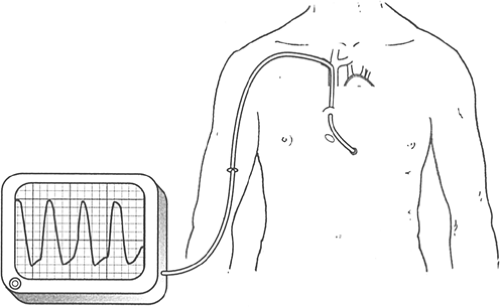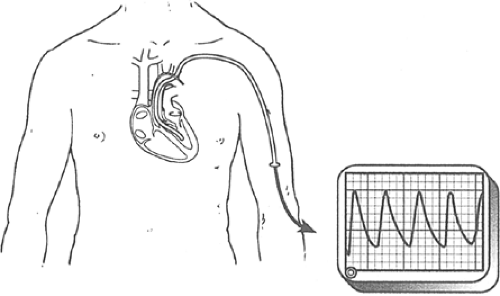Catheterization of the Heart and Coronary Arteriography
A catheter is simply a long, thin, hollow tube of any kind. It’s possible to thread a catheter up a vein or an artery and into the heart. If a catheter is threaded up a vein it will move through the inferior or superior vena cava, and then into the right atrium, the right ventricle, and, if desired, into the pulmonary artery (Fig. 20-1).
If it is threaded up an artery it ends up in the left ventricle. It’s not practical to try to force a catheter backward across the mitral valve, so the left ventricle is as far as the catheter can go (Fig. 20-2).
Once the catheter is inside the heart, we can measure the pressure in the different chambers. It’s also possible to detect stenosis of the aortic or pulmonic valves and evaluate the degree of narrowing. This is done by measuring the pressure above and below the valve. The pressure above a stenotic valve will be high and the pressure below the stenosis will be low.
By knowing the difference in pressure, the cardiologist can use a formula to calculate the actual size of the valve opening (see Fig. 9-8).
Stay updated, free articles. Join our Telegram channel

Full access? Get Clinical Tree




